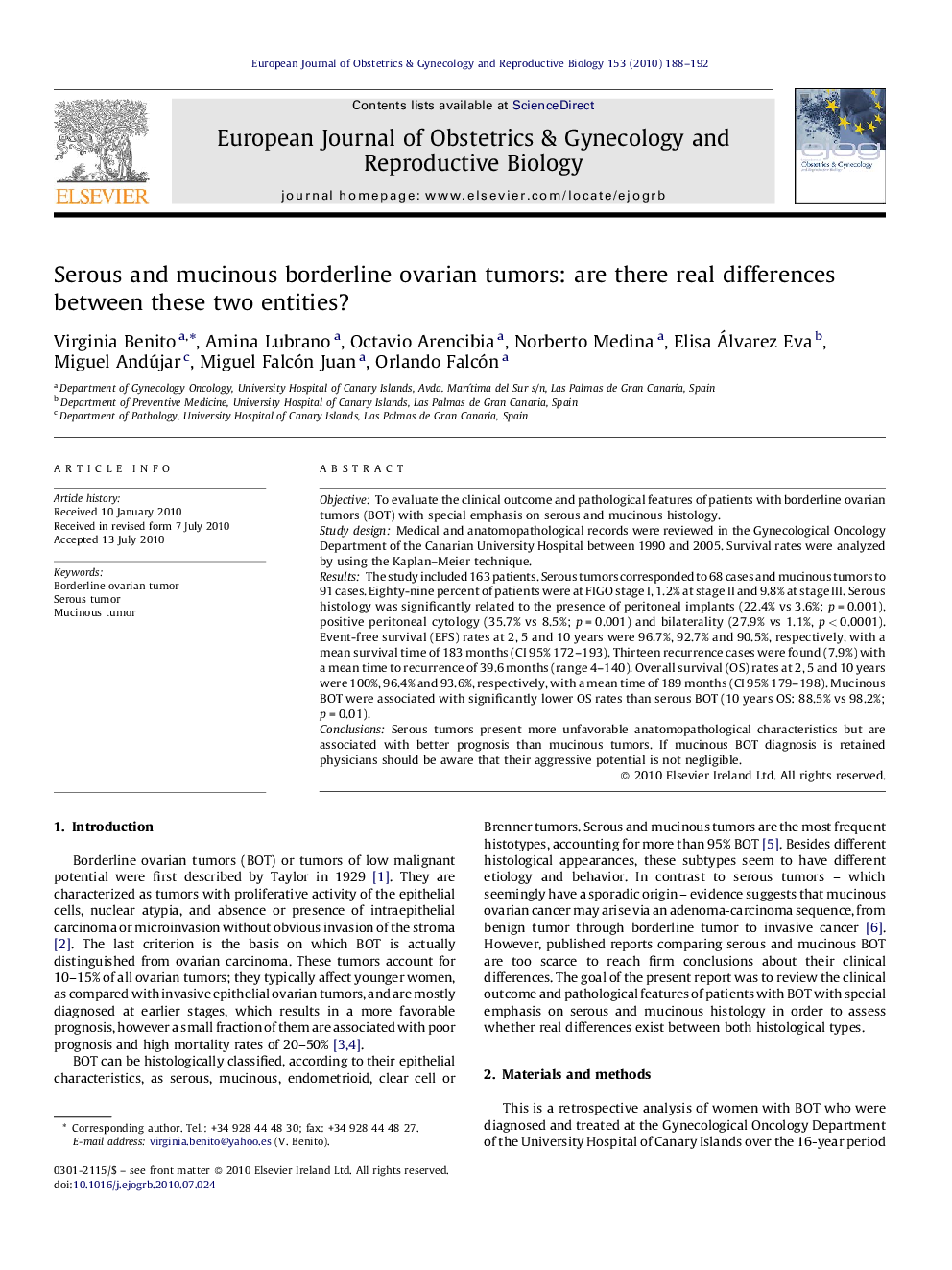| Article ID | Journal | Published Year | Pages | File Type |
|---|---|---|---|---|
| 3920644 | European Journal of Obstetrics & Gynecology and Reproductive Biology | 2010 | 5 Pages |
ObjectiveTo evaluate the clinical outcome and pathological features of patients with borderline ovarian tumors (BOT) with special emphasis on serous and mucinous histology.Study designMedical and anatomopathological records were reviewed in the Gynecological Oncology Department of the Canarian University Hospital between 1990 and 2005. Survival rates were analyzed by using the Kaplan–Meier technique.ResultsThe study included 163 patients. Serous tumors corresponded to 68 cases and mucinous tumors to 91 cases. Eighty-nine percent of patients were at FIGO stage I, 1.2% at stage II and 9.8% at stage III. Serous histology was significantly related to the presence of peritoneal implants (22.4% vs 3.6%; p = 0.001), positive peritoneal cytology (35.7% vs 8.5%; p = 0.001) and bilaterality (27.9% vs 1.1%, p < 0.0001). Event-free survival (EFS) rates at 2, 5 and 10 years were 96.7%, 92.7% and 90.5%, respectively, with a mean survival time of 183 months (CI 95% 172–193). Thirteen recurrence cases were found (7.9%) with a mean time to recurrence of 39.6 months (range 4–140). Overall survival (OS) rates at 2, 5 and 10 years were 100%, 96.4% and 93.6%, respectively, with a mean time of 189 months (CI 95% 179–198). Mucinous BOT were associated with significantly lower OS rates than serous BOT (10 years OS: 88.5% vs 98.2%; p = 0.01).ConclusionsSerous tumors present more unfavorable anatomopathological characteristics but are associated with better prognosis than mucinous tumors. If mucinous BOT diagnosis is retained physicians should be aware that their aggressive potential is not negligible.
